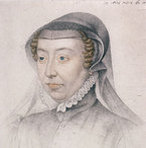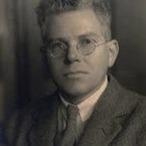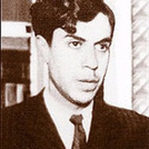|
Contralto Sonia Prina joined forces with the incomparable Il Pomo d’Oro for a memorable evening, combining the beauty and depth of Vivaldi with some breathtaking performances. It was a triumph for Prina, earning a rapturous applause from a packed Wigmore Hall. The first of the three Vivaldi cantatas we were treated to was “Perfidissimo cor!” which was accompanied only by Harpsichord, Lute and Cello. This intimate grouping allowed Prina to communicate, with a potent intensity, the emotional charge of the text, weaving an enchantment which remained throughout the evening. Prina’s famous coloratura came early in the recital, as she navigated effortlessly through the demisemiquaver runs occurring repeatedly on the word “sdegno” in the first of the two arias, which she ended with a formidably solid G3. The second aria contained many uses of elements of the harmonic minor scale, which requires pin-point accuracy of pitch to sound effective: a requirement that Prina was more than happy to deliver.
The first aria of the second Vivaldi Cantata, “Cessate, omai cessate”, opened with an interesting mix of pizzicato and bowed strings: the score stipulating that only the cello and one violin be bowed. At moments of emphasis, all the strings are designated arco, which gave an aggressive, whip-like effect to the phrase “Già barbare e spietate”. Prina’s beautiful ornament at the end of the B section lead straight into the da capo, where she added a series of tasteful mordents, turns and trills, finishing with an ornament that deliciously portrayed Prina’s dark and velvety lower register. The second aria set the Wigmore Hall on fire, as Prina performed at impossibly high speed, throwing out F5’s like fireworks, while adding even faster ornamentation in the da capo. The roar that came from the audience proclaimed the first half a resounding success. In the second half, Prina presented us with two arias from Vivaldi’s operas. The first, “Cosi potessi anch’io” from Orlando furioso, saw Prina don the mantle of the Sorceress Alcina, alternating between longing for her lover, and lamenting her lot at the hands of the god of love. Prina carried a beautiful legato line, with a warm and passionate tone throughout. The second aria, “Se in ogni guardo” fromOrlando finto pazzo, saw Prina rip through the music like lightning. Her precision in the difficult coloratura passages was astounding. The final piece in the second half was the cantata “Amor, hai vinto”. It is known as the Queen of Vivaldi’s cantatas, and is full of explosive and passionate music. The first aria starts with a powerful continuo line, and sinuous, interweaving upper stings, in pairs of resolving dissonances. Prina dealt expertly with the lines of triplet semiquavers, while declaiming emphatically the agitated and fiery text. The coloratura in the second aria was a pure delight to listen to in the hands of so athletic an artist. Prina choice of repertoire was well balanced, and an excellent showcase for her exhilarating contralto voice. The first of the Instrumental pieces, Giuseppe Brescianello’s Sinfonia in F, Op. 1, No. 5, was a joyous way to introduce Il Pomo d’Oro to the audience. The opening movement alternated between lively movement, and a series of slower, tender motifs played only by the higher strings. The other two pieces were Violin concertos by Vivaldi. The middle section of the first concerto, the C major RV 181, had a tender and mournful line for the violin which Riccardo Minasi, director of Il Pomo d’Oro, performed with intuitive and sensitive musicianship. The final concerto, the E minor RV 277 “Il Favorito”, had an astounding part for Riccardo Minasi, who truly took on the mantel of Vivaldi with virtuosity and skill. I must also mention the extraordinary Ludovico Minasi on cello, and Giulio D’Alessio on Viola, who managed to tease the most beautiful “alto” sounds right from the soul of the instrument. For the encore, Prina gave us two marvellous arias. The first was “Vedrò con mio diletto” from IlGiustino. Prina introduced the aria by telling us that it was one of her favourites, which she used to sing when she was pregnant. In her hands, the aria reprised the enchantment of the first cantata. Her dynamic decisions were perfectly considered, and her choice of ornamentation enhanced the already beautiful melodic line. It was wonderful to hear Prina use the lower registers in the da capo, rather than moving higher in the voice as is usually the case when this aria is performed by other singers. The second encore was "Nel profondo" from Orlando Furioso. She introduced the aria as being both funny and fast: and indeed it was. She interacted magnificently with both the orchestra and the audience: the wonderful “yes” gasped by Riccardo Minasi as Prina reached the low G3 on the word “mondo” received a hearty laugh from the audience. In the da capo, Prina launched herself up to a spectacular G5, and followed it immediately by plummeting down two octaves to a G3. It was a fantastic concert, one of the best I have been to. I left the concert exhilarated by the music, and determined to see this superb contralto again very soon. I was also very pleased to have had the chance to hear Il Pomo d’Oro, as they are truly one of the best period orchestras on the circuit today.
0 Comments
|
Categories
All
Archives
September 2014
|
MOST VIEWED POSTS
© James Edward Hughes 2013
 RSS Feed
RSS Feed





